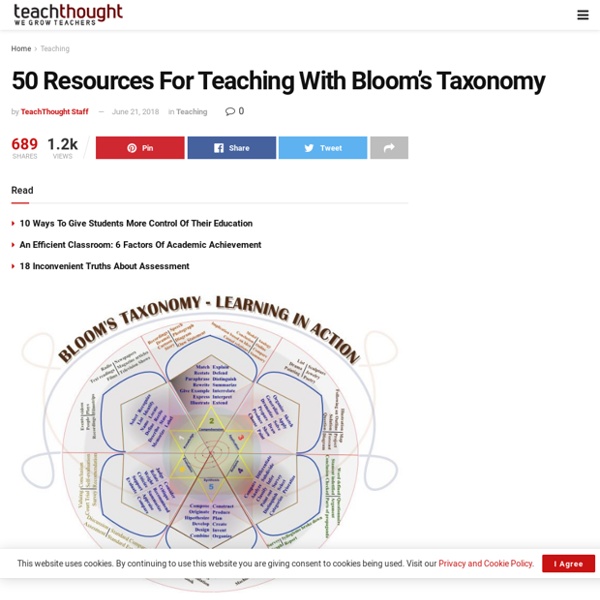The Bloom's Taxonomy Periodic Table of Activities for Inspired Learning
Many of our readers have enjoyed the Bloom’s Taxonomy resources we’ve shared in the past, with the Bloom’s Taxonomy Verbs Poster heading up the list. Now we’ve got another one we think you’ll enjoy—check out the Bloom’s Taxonomy Periodic Table from us here at the GDCF. It features 6 different groups of “elements” that reveal fun and challenging activities corresponding to some of those Bloom’s Taxonomy verbs. Use it for enhancing lessons at every level of Bloom’s Taxonomy, or combine some of the activities for even more inspired learning. These can be used both as learning and as quick assessment-on-the-go activities to suit your needs. Get My Bloom’s Periodic Table!
Planning to be great
The new year is well underway at Durrington High School. Due to the local reorganisation of schools in our area, we had a double transition year. We welcomed 330 new Y7 students for the first time, alongside 330 new Y8 students at the same time – 660 new students in all!
249 Bloom's Taxonomy Verbs For Critical Thinking
249 Bloom’s Taxonomy Verbs For Critical Thinking by TeachThought Staff Bloom’s Taxonomy’s verbs–also know as power verbs or thinking verbs–are extraordinarily powerful instructional planning tools.
A New Wonderful Wheel on SAMR and Bloom's Digital Taxonomy
The buzz that the Modern Taxonomy Wheel generated over the last couple of weeks has not yet died out and now we have a new updated wheel from the same guy Allan Carrington. We love Allan's work and we find it really interesting. His wheels come along in such a visually attractive way summarizing most of the apps and web tools we have been sharing here with you. If you already had a chance to have a look at the previous wheel and compare it with this new one you will notice that Allan has brought about some new updates to the new wheel.
Why AfL might be wrong, and what to do about it
Some cows are so sacred that any criticism of them is fraught with the risk of bumping up against entrenched cognitive bias. We are fantastically bad at recognizing that our beliefs are often not based on evidence but on self-interest, and it’s been in everyone’s interest to uphold the belief that AfL is the best thing that teachers can do. When confronted with ‘others’ who disagree with our most fervently held beliefs, we tend to make the following series of assumptions: They are ignorantThey are stupidThey are evil When in the past I have been critical of AfL (or anything else) the most common responses is that I don’t understand it. When I present the incontestable evidence that I do understand it, opponents often treat me as if I’m a bit silly: only an idiot could believe anything so ludicrous and patently untrue.
New: Bloom's Taxonomy Planning Kit for Teachers
March 28, 2014 Somebody shared with me this wonderful Bloom's Taxonomy Planning Kit for Teachers and want you to have a look as well. The image is huge and so can't upload it here but you can use the provided link to access the original version. The reason why I am sharing this work here is because it provides a new way to think about Bloom's Taxonomy. In Bloom's Taxonomy Planning Kit, you will be offered with a variety of key words, action verbs, outcomes and questions related to each of the thinking levels in the taxonomy.
Principles of Effective Teaching
Teachers are always being offered lists of principles, axioms, tenets, precepts – the magic beans of teaching. We’re desperate to make sense of it all – to make something very complicated, simple and easy to grasp. Whether it’s the #5minplan series from @TeacherToolkit or something like my own Lesson Observation Checklist, there’s a demand for handy ready-reckoners of one form or another. This diagram from Andy Tharby and Shaun Allison’s Every Lesson Counts, is a rare example of where this has been done well – not least because they’ve got a whole chapter in the book to support each of the ideas summed up neatly here: The work by Barak Rosenshine, compiling ten golden nuggets from research, is another good example.
A New Fantastic Bloom's Taxonomy Wheel for iPad Apps
March 21, 2014 Today while I was browsing through my Twitter feeds I came across this fabulous Bloom's Taxonomy wheel of apps shared by Anthony. If you still recall, some previous versions of this wheel have already been featured here in Bloom's Taxonomy for Teachers section . As you can see, the wheel outlines a wide variety of verbs and activities related to each thinking level of Blooms taxonomy coupled with iPad apps that go with it. These apps are supposed to help teachers and students better cultivate these different thinking levels in their use of iPad apps. And because the the visual is not hyperlinked, I went ahead and provided the links for each of these apps in the lists below.
A 3 Dimensional Model Of Bloom's Taxonomy -
A 3-Dimensional Model Of Bloom’s Taxonomy by TeachThought Staff Well, technically it’s a 2-dimensional representation of a 3-dimensional model, but being limited as we are in 2016 to 2D screens, it is what it is. (Soon you’ll be able to 3D print what you see–download the plans and print it.



